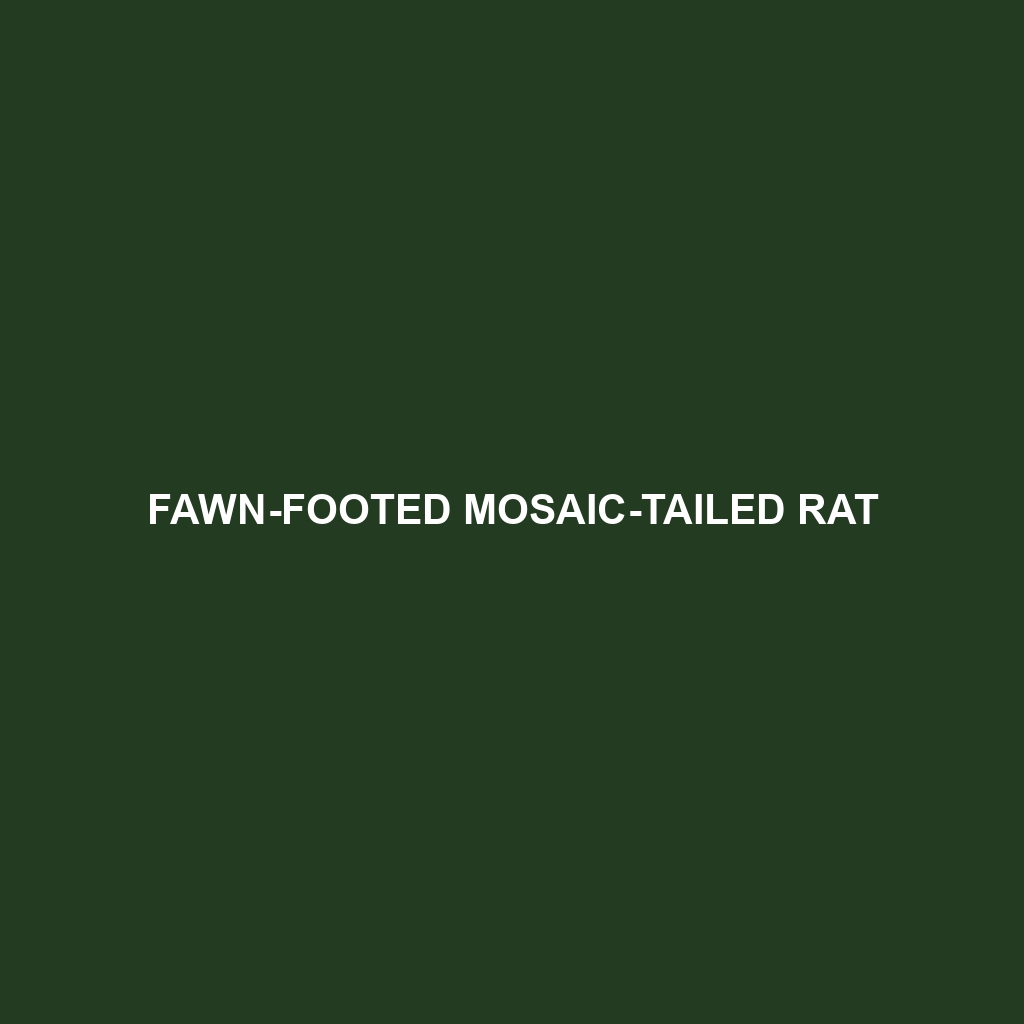Greater Long-tailed Pouched Rat
Common Name: Greater Long-tailed Pouched Rat
Scientific Name: Beamys hindei
Habitat
The Greater Long-tailed Pouched Rat is primarily found in the dense forests of East Africa, particularly in countries such as Kenya, Tanzania, and Uganda. This rodent thrives in moist, tropical environments, often residing in areas near rivers, wetlands, and fertile valleys. Its preference for secluded habitats helps it avoid predators while accessing abundant food resources.
Physical Characteristics
The Greater Long-tailed Pouched Rat is medium to large-sized, measuring approximately 30 to 38 centimeters (12 to 15 inches) in body length, with a bushy tail nearly as long as its body. The pelage is a mix of brown and grey hues, which provides effective camouflage in its forest environment. Distinctive features include its long, furry tail and large cheeks that help the species store food. Additionally, its large eyes are adapted for nocturnal activity, making it a proficient forager after dark.
Behavior
This species exhibits a primarily nocturnal lifestyle, becoming active at night when it forages for food. Greater Long-tailed Pouched Rats are known for their sociable nature, often living in small family groups. They communicate using a range of vocalizations and body language, displaying various behaviors such as grooming and play among group members. Their unique pouch-like cheek chambers allow them to carry food back to their nests, showcasing an interesting adaptation in their feeding behavior.
Diet
The diet of the Greater Long-tailed Pouched Rat is largely herbivorous, consisting mainly of fruits, seeds, roots, and tubers. Occasionally, they will consume insects and small invertebrates, making them omnivorous to a degree. Their foraging habits play a crucial role in seed dispersal within their ecosystem, helping to promote biodiversity in their forest habitats.
Reproduction
Breeding for the Greater Long-tailed Pouched Rat typically occurs during the rainy season, which coincides with the peak availability of food resources. After a gestation period of about 28 to 30 days, females typically give birth to litters of 1 to 5 pups. The young are weaned after several weeks and often remain with their mother until they are mature enough to establish their territories.
Conservation Status
Currently, the Greater Long-tailed Pouched Rat is classified as “Vulnerable” on the IUCN Red List. Habitat loss due to deforestation and agricultural expansion poses significant threats to its population. Conservation efforts are essential to protect this species and its natural habitats from further decline.
Interesting Facts
1. The Greater Long-tailed Pouched Rat is known for its ability to use its cheeks as pouches to store food, which is a unique characteristic among rodents.
2. This species often builds intricate burrow systems that can be extensive, providing protection from predators and harsh weather conditions.
3. In some regions, local communities have begun to recognize the species for its potential role in pest control, as they help keep insect populations in check.
Role in Ecosystem
The Greater Long-tailed Pouched Rat plays a critical role in its ecosystem by contributing to seed dispersal and maintaining plant diversity. Their foraging activities help aerate the soil and promote nutrient cycling. Furthermore, as both prey and foragers, they form an essential part of the food web, supporting a range of predators and other wildlife within their forest environment.
